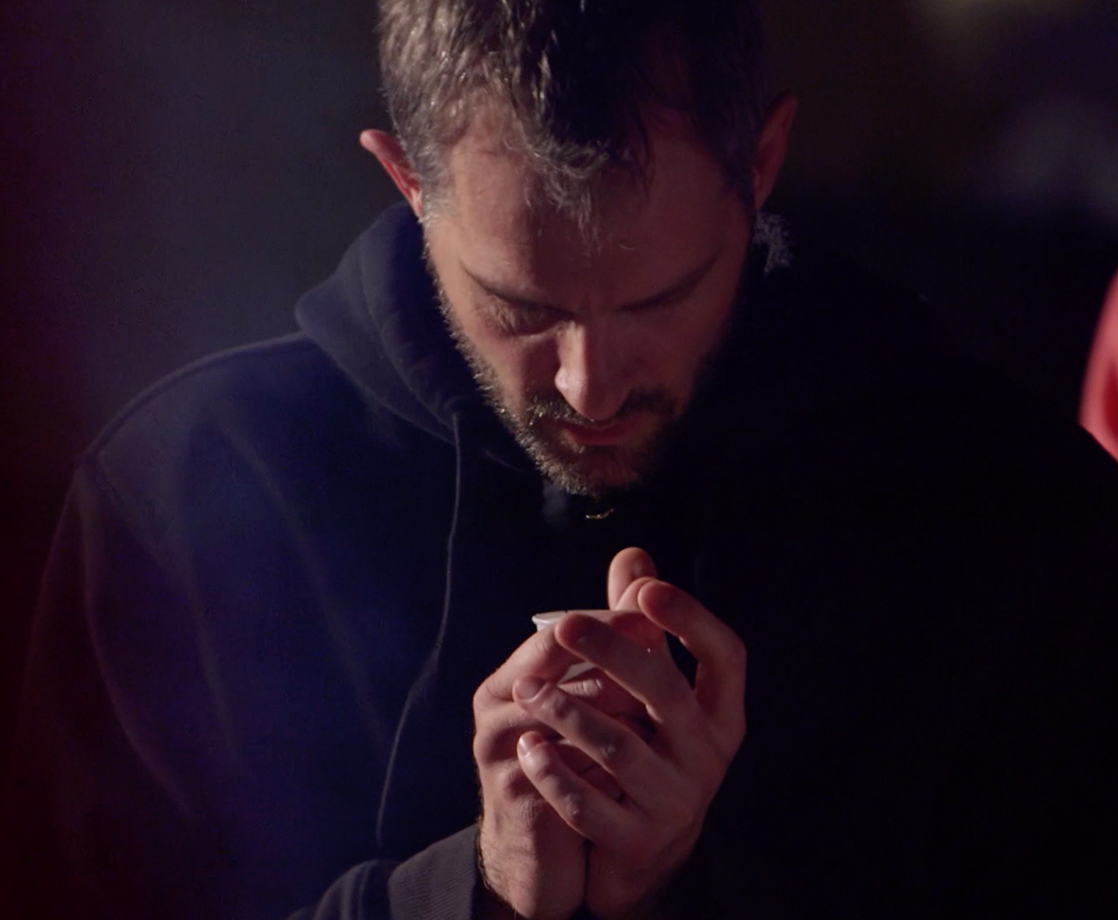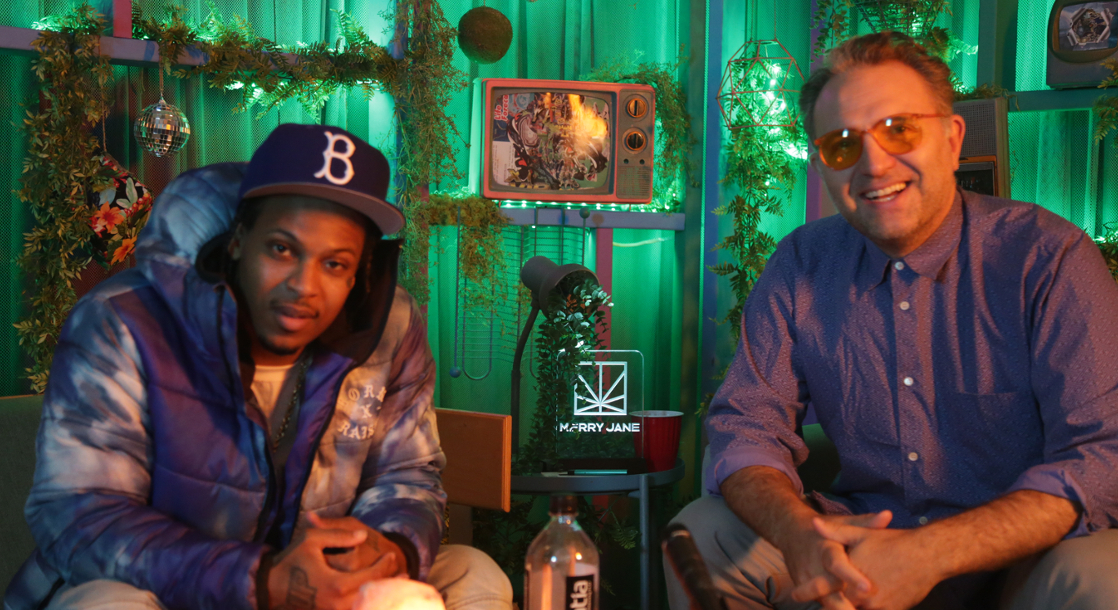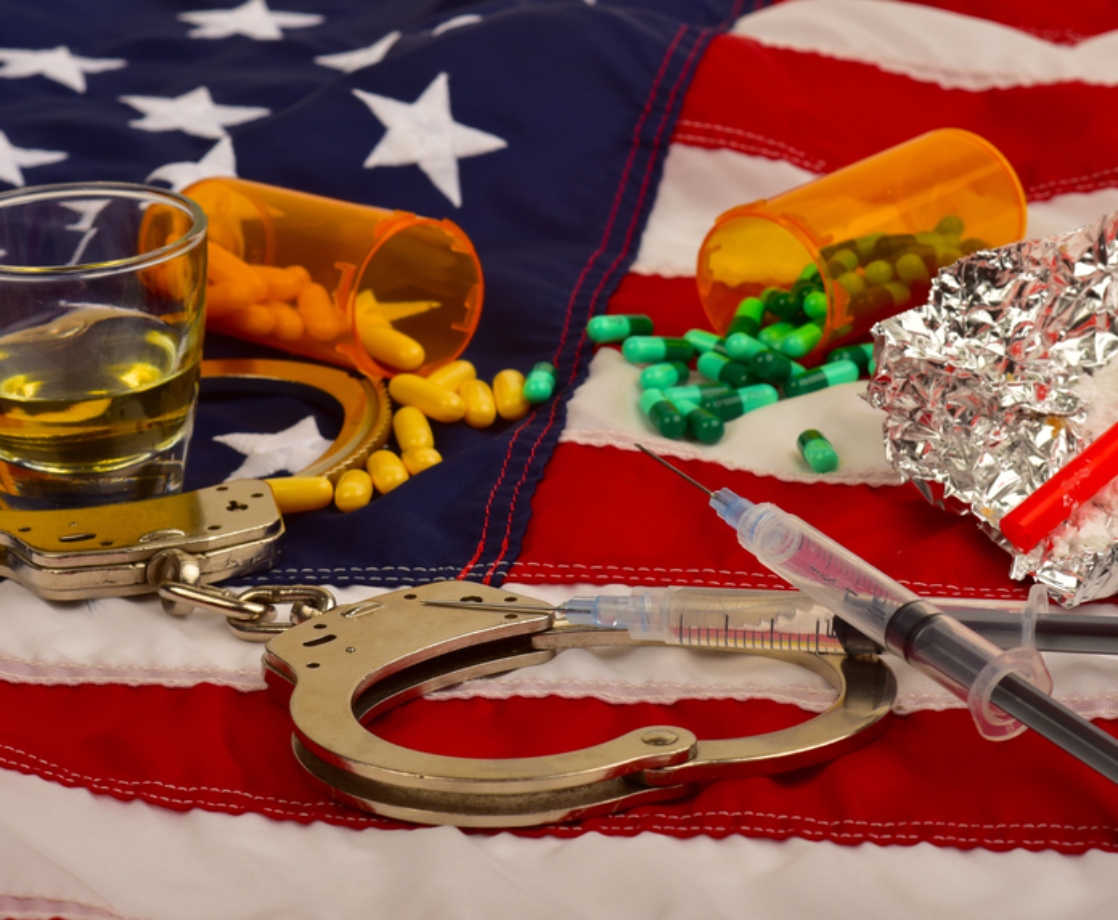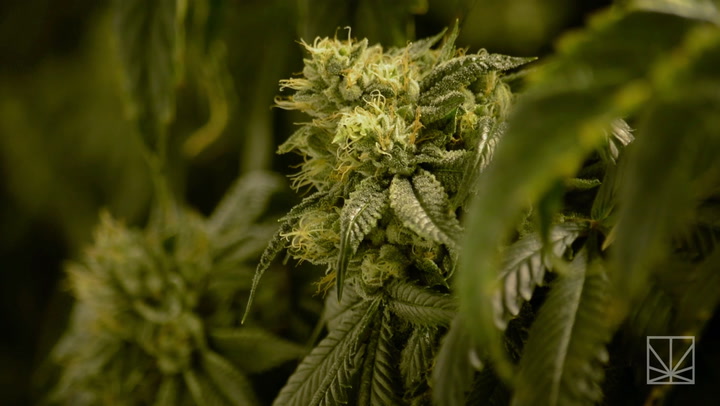Photos courtesy of Matt Kahl and '16:20'
American Civil War General William Tecumseh Sherman once said, “War is hell.” And if war is hell, the memories associated with it are too. Given that 22 veterans commit suicide every day in the U.S., Sherman’s observation is more than simple poetics.
But it doesn’t have to be this way.
Matt Kahl served in the 101st Airborne Division in Afghanistan, where he experienced the horrors of war firsthand. An accident left him with permanent injuries, sending him home as a decorated, but broken warrior.
Today, Kahl credits his gradual but inspiring recovery to psychedelics and psychoactive substances. His journey began with cannabis, and over the years, his tool set expanded to include ayahuasca, ketamine, and other psychedelics that modern medicine (and even state lawmakers) is slowly starting to warm up to.
Kahl himself led the charge in Colorado where he’s lived since 2013. Along with cannabis consumer advocate Larisa Bolivar, he successfully sued Colorado’s government in 2017 to add PTSD to the state’s list of qualifying conditions for medical marijuana.
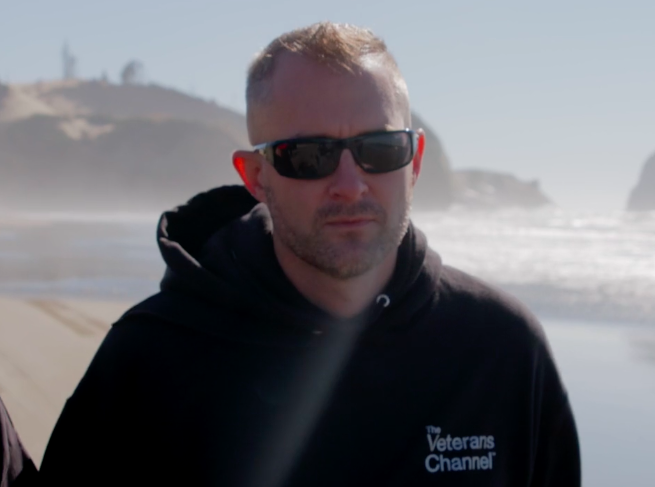
Above, Matt Kahl filming "16:20" with The Veterans Channel
Recently, Kahl moved beyond policy and into media. This year, he was featured in the award-winning documentary From Shock to Awe, a film that followed him and other veterans as they experimented with various psychedelics to navigate the trauma at the core of their PTSD.
Now, Kahl hosts his own web series with fellow veteran Steve Defino. Titled 16:20, the show focuses on vets who take medical cannabis for a variety of conditions. Broadcast exclusively on The Veterans Channel website, each episode takes place in a different U.S. state, and just three episodes in, he sees the show as the perfect avenue to educate Americans and hopefully influence more people to help end the War on Drugs.
Kahl made time to catch up with MERRY JANE, where we discussed his media projects, how he’s conquering PTSD with psychedelics, and how a new drug paradigm could save thousands, if not millions, of lives.
This interview has been edited for length and clarity.
MERRY JANE: Before we dive into your new TV show, can you first tell us a bit about the recent documentary you appeared in, From Shock to Awe?
Mat Kahl: The film chronicles the journey from trauma to healing. It takes place over the course of three years. At the beginning, [veteran] Mike Cooley and I are both kind of messed up. But over the course of the movie, we talk about cannabis use, which got us off pharmaceuticals. Eventually, we try ayahuasca.
Also, there’s a bit with Michael’s wife and my wife, too. Michael’s wife, Brooke, was kind of afraid of puking, so she tried MDMA instead. It really helped their relationship and it helped with my relationships, too.
You’ve tried MDMA as well?
I have. I’ve tried just about everything. About a month after they started filming this movie, I went down to Peru for a ten-day dieta. There were three ayahuasca ceremonies during that. About a month later, I went to Mexico to an ibogaine clinic. I tried ibogaine and also “toad,” which is 5-MeO-DMT. Since then, here in the States, I participated in a peyote ceremony, too.
Of all the psychedelics you’ve tried, which one left the biggest impression?
They all are very similar, but they’re all very, very different, too. I don’t think there’s one that’s necessarily supreme above any of the others.
For instance, ibogaine is probably one of the most profound experiences I’ve ever had. But it’s extremely difficult. It lasts forever, like a twelve-hour peak, 24-hours of effects. It’s extreme, and you can’t really move around while you’re on it, otherwise everything starts spinning and you get sick. As long as you stay still, it’s okay, but as soon as you start moving, it’s incredibly disorienting.
The substance I received on the Sunday following ibogaine, that’s probably one of the most interesting psychedelics of them all. Toad, or 5-MeO-DMT. It was like – gosh, there are almost no words. It was like getting a glimpse into the divine. It was pure love. It was extremely intense. I think more so than any of the others, 5-MeO-DMT has changed my life.
I mean, they all have. After the past three years of trying all this stuff, I’ve changed. A lot. At the beginning of this journey, I was really just trying to figure out a way I could get back to being the person I was before [serving in the army]. I never even thought that maybe I could become even better than I was before.
Before you delved into psychedelics, you were on the government’s “cocktail” for PTSD. How does that cocktail contrast with the psychedelics?
Oh my god. The cocktail drugs made me a complete zombie. I couldn’t even hold a conversation. I’d be falling asleep in the middle of my sentences. I was medicated into oblivion.
The only way that Western science knows how to treat PTSD symptoms is by squashing them. They sedate you with a lot of different drugs. I was on opiates and benzodiazepines at the same time. I was on SSRIs, SSNIs, mood stabilizers, neuroleptics — you name it. Then, there were all the pills to treat the side effects of the other pills, and those things also had side effects. The system is not prepared to actually help anyone heal; they’re just trying to make the problem go away. Meaning they’re trying to make you go away.
In your opinion, does the cocktail make the PTSD worse?
A lot of these pharmaceutical drugs enhance the veteran’s isolation. Isolation is one of primary symptoms of PTSD that no one talks about. You sit at home and pop these pills, and you waste your life away.
What psychedelics do is bring you back into connection with your relationship with the world. They make you more present. They make you engage. It’s the opposite approach [from Western medicine]. There’s no symptom suppression. A lot of these psychedelics make you relive your trauma in excruciating detail. It’s not a fun process. You have to actually face your demons in order to defeat them. There’s no other way.
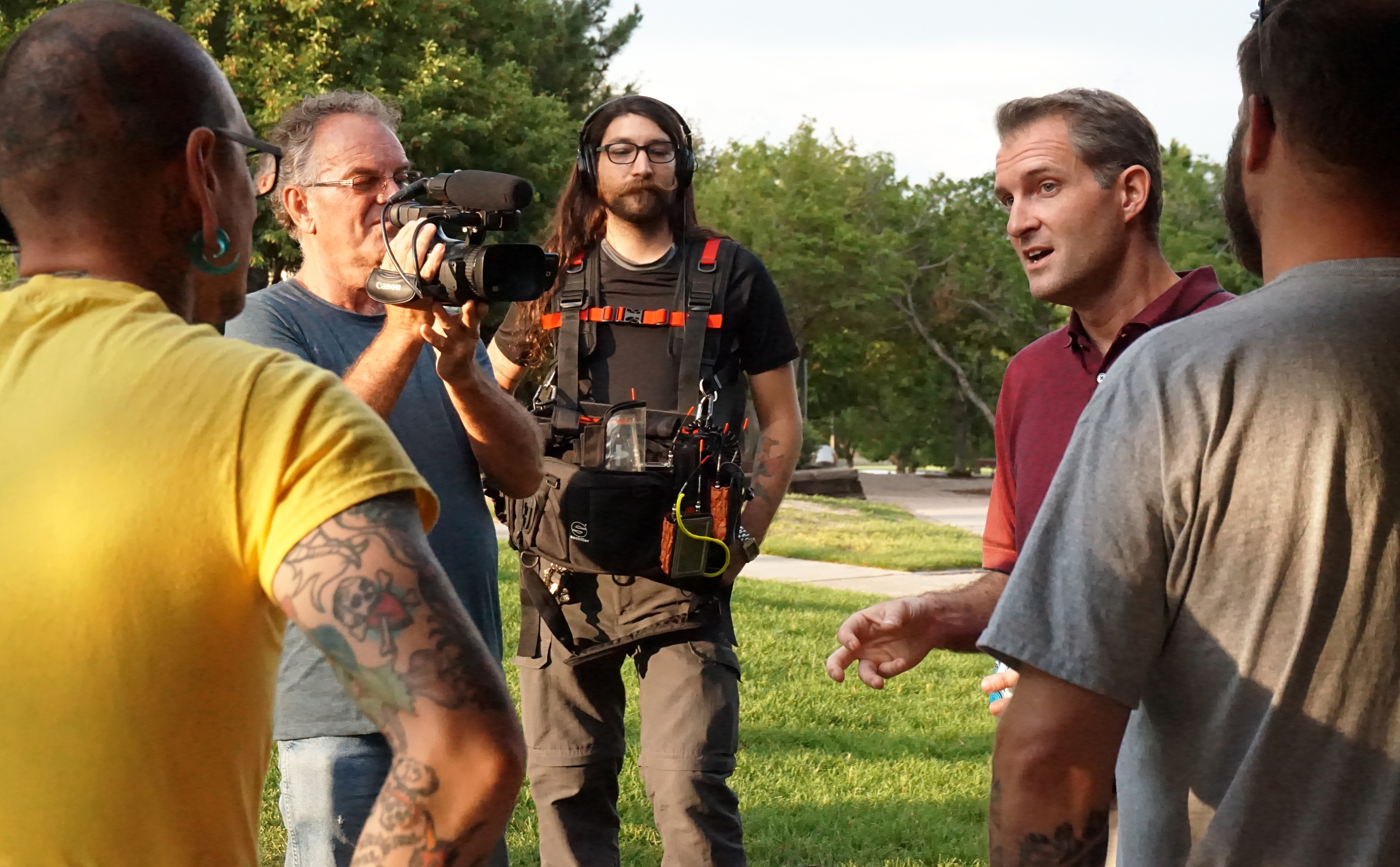
Several years ago, shortly after you returned from Afghanistan, you were anti-cannabis and anti-psychedelics. Was cannabis your first introduction to psychedelic therapies?
Yeah. I tried cannabis in college. Who doesn’t dabble around in a few things? [laughs] But I didn’t think of it then as an actual therapy. When I was back in North Carolina, I had a friend who suggested I try cannabis. I was on all these drugs, and my wife was totally against it. Why add one more to the list?
Eventually, I tried cannabis. My wife was there, she saw it happen. She saw the tension melt away. I started daydreaming for the first time in years. It didn’t take long before I snapped back into my body and the fear, back into the anxiety and hypervigilance. But for a few moments I was at peace, and my brain remembered that. I knew this was going to be the way I was going to get off all these pharmaceuticals.
I came to Colorado in 2013. The first thing I did was talk to my VA doctor, and I said, “Hey, this is Colorado. What do you think about medical cannabis?” And to my surprise, my doctor was receptive. He said, “If you haven’t tried it, you probably should. But I can’t give you the opiates if you’re on it.”
And I said, “Sure.” I was on 160 mg of oxycontin a day. It was pretty rough coming off all that stuff, for a little while. But it was the best decision I ever made, and I never looked back.
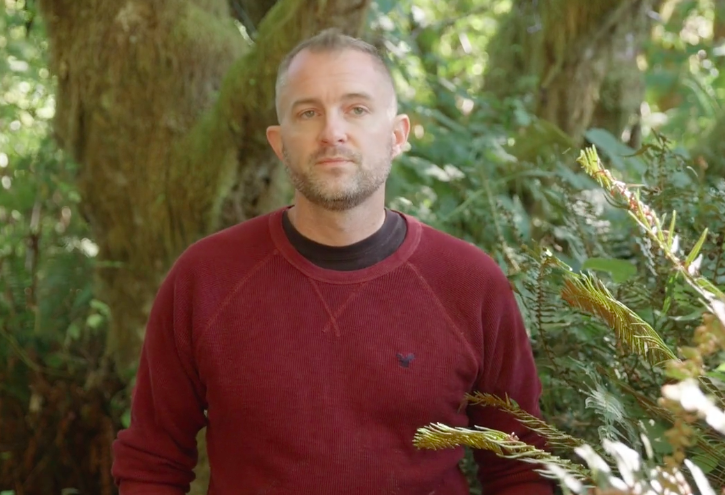
You’re also part of an experimental ketamine therapy program. Can you tell us a little about that?
That’s Innate Path. It’s a totally new way of doing psychotherapy. The ketamine came as little lozenges, and I went into Innate Path, and I sat on a chair.
The therapy is all about somatic psychotherapy. Most people are incredibly dissociated from their bodies, from the sensations. They suppress those things just to live life. The pain, the twinges, the nausea, these happen because of the things that happened in the past. So, we suppress it, and drive on. What they do at Innate Path is they teach you to go into those sensations and explore them. Because trauma is stored in the body.
They also use cannabis in the sessions. My first session, I was pretty skeptical because I smoke weed and sit in a chair all the time. [laughs] What’d I really expect to happen? But to my surprise, something did happen. Within a few seconds, I was crying and talking to God, really. Within a few weeks, I was delving into some really deep stuff. A lot of anger, hate, rage. One of the things I discovered was that a lot of it was really directed at me, not the outside world. That’s the message I’m trying to put out there right now: It’s never too late to turn 180 degrees and become a good person.
You’ve proven that yourself. You went from being non-functional to the host of a TV show. How’d that happen?
[The producers were] filming their first episode for this 16:20 show, and they contacted Steve Defino. He’s been a partner of mine since the early days, at least 2015. We started growing cannabis together for vets, pounds and pounds and pounds. Seeds, cannabis, medicine, accessories, lights — everything. We’ve given out so much, together. Anyway, he got this call from a Canadian veteran who said, “We’re coming down to Colorado. Could you help us out and gather up some vets?”
Defino called me, and he said, “I really need some help.” I said, “Yeah. Let’s bring it.”
We got together some vets, built a little campfire, and they filmed it. I talked back and forth with the other vets. The producers saw it, and they said this was really good stuff, and they thought they could make a whole series out of it. A month later, they called us and asked if we wanted to be the official hosts. We said, “Yeah, we’d love to.” Anything to change the hearts and minds of Americans.
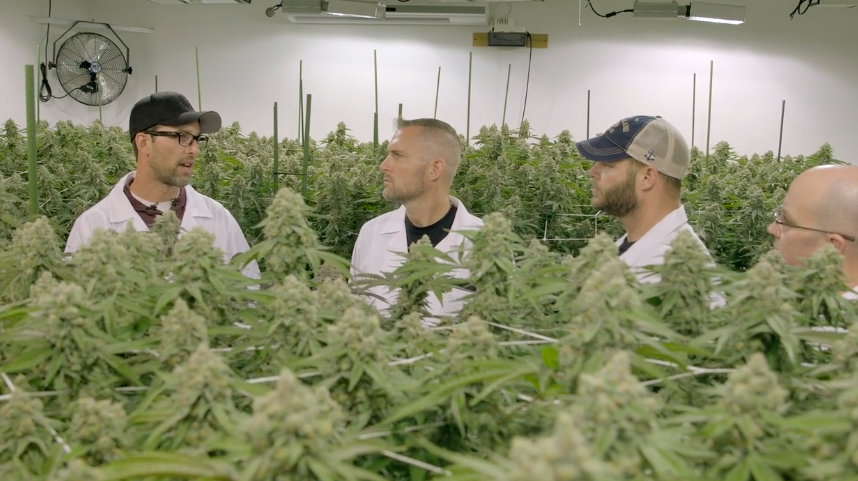
Which states have you already filmed at?
We did one in Colorado, one in Oregon, and we got footage from Pittsburg.
Did you learn or realize anything insightful while shooting for 16:20?
Civilians have trauma, too. Veterans are the poster boys for PTSD, but it’s our responsibility to bring attention to others who have trauma.
There may be 22 vets a day committing suicide, but there’s 120 people in the general population who are committing suicide every day, too. Beyond that, there’s 198 people who are dying of overdoses every single day.
Dr. Gabor Maté has talked about how drug addiction is really an attempt to medicate untreated trauma. That’s all a drug addiction is: suicide on an installment plan.
That’s about 320 people who are dying every day in America from untreated trauma. That’s a huge issue. It’s an epidemic. If it was any other cause, like E. coli or heart disease, we would have billions of dollars focused on the problem. But we don’t, not right now, because it’s not recognized. Nobody cares about drug addicts.
It’s not just lives lost. It’s doing massive amounts of damage to our economy, to our social structures. When people are traumatized, they can’t work. When people are healthy, they get out there and they change the world.

What do you see as the solution to America’s epidemics of suicide and drug addiction?
We have to end the drug war. Period. The whole thing, top to bottom. We should not be criminalizing this health issue. And it is a health issue, not a criminal one.
A drug addict is not trying to hurt anybody else by using illegal drugs. They’re trying to medicate their problems. Unfortunately, we’re not giving people the resources to effectively treat their trauma, so they’re going to whatever’s available, whether it’s heroin or cocaine or methamphetamine. They go to all these high-risk drugs that tend to help them, at least in the moment, but it hurts them in the long-run. The same goes for pharmaceuticals. Some medicines are legal, and some are not. The difference is arbitrary.
Ideally, if we had the ability to get to these people and give them the tools they need to fix themselves, then their futures would look very different. Psychedelics would help them to heal so they can get back to doing the things everybody else does in life: working, playing, making families. This is what we should all be about. We shouldn’t be kicking people when they’re down. We should be lifting up the broken.
For more on “16:20,” including where to watch past episodes, visit The Veterans Channel here
Follow Randy Robinson on Twitter


